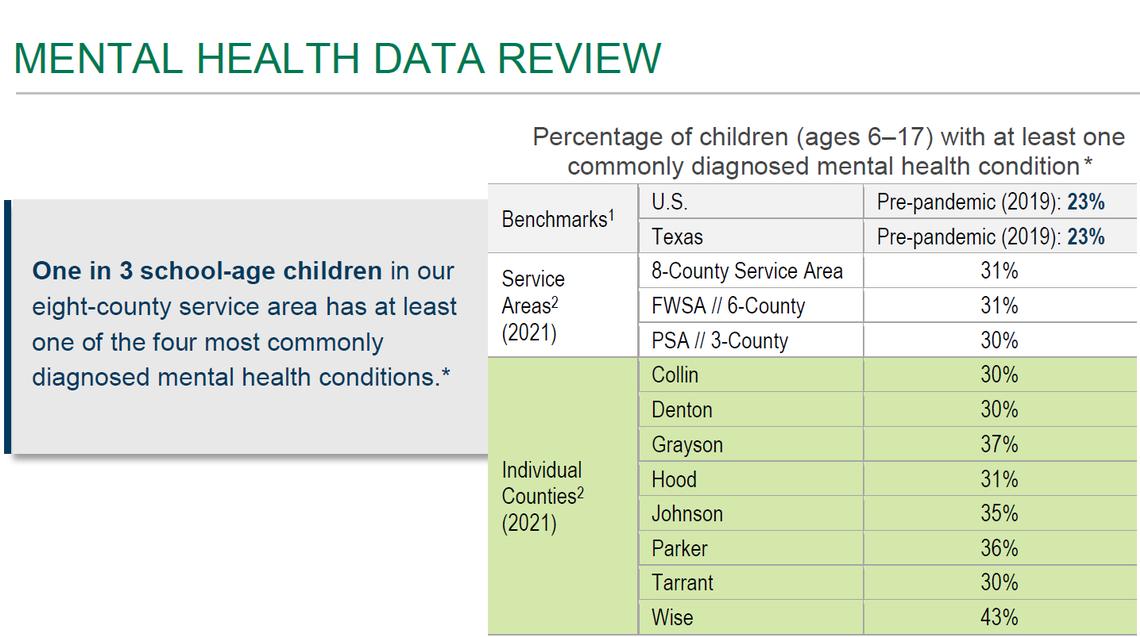Texas hospitals don’t have enough beds, services to care for children, new report suggests
With the commencement of the 88th Texas Legislature, the Children’s Hospital Association of Texas on Wednesday briefed legislators and staff on their legislative priorities surrounding children’s hospitals, as well as critical children’s health care issues.
The association held the first annual “Children’s Hospital Day” at the Texas State Capitol, in hopes that children’s health care will be top-of-mind for lawmakers this legislative session. CHAT is a nonprofit representing seven children’s hospitals in Texas.
“Children in Texas deserve to grow up as healthy as possible, and CHAT urges the legislature to support children’s hospitals this legislative session,” said Stacy Wilson, president of CHAT, in an op-ed submitted to the Star-Telegram.
Here’s what you should know about the state of children’s health in Tarrant County and Texas.
4 million Texas children are enrolled in Medicaid
CHAT wants lawmakers to ensure that Medicaid payments are appropriate for children’s hospitals.
“Unlike hospitals that treat adults, children’s hospitals do not receive significant Medicare payments and therefore have fewer good payers to help cover the cost of caring for children and adolescents of varying ages and developmental stages,” Wilson says.
More than half of Texas children, about 4 million, are enrolled in Medicaid or the Children’s Health Insurance Program. In Tarrant County alone, 272,445 children are enrolled in Medicaid, according to Texas Health and Human Services. Due to the number of children enrolled in Medicaid, children’s hospitals need “stability and predictability” in their Medicaid reimbursement rates to ensure that they continue providing care to children who need it, Wilson said.
Suicide surpasses child abuse, car wrecks for cause of trauma deaths among Texas children
Investment in mental health care for children and adolescents is critical, CHAT says. Children’s hospitals can then expand access to needed services.
According to the 2021 Cook Children’s Community Needs Assessment, one-in-three school-age children in Cook Children’s eight-county service area has been diagnosed with a mental health condition. This represents approximately 267,730 school-age children.

The four most commonly diagnosed mental health disorders in area children are attention-deficit/hyperactivity disorder, behavior/conduct problems, anxiety and depression, according to the report.
But more than 63,000 children or 5% did not receive needed mental health care, which is higher than the state and national rates of 3% and 1%, respectively. Barriers cited by parents included the pandemic, cost of care, inadequate insurance, scheduling conflicts and limited service availability in their areas. Per Cook Children’s, 68% of people felt children in their communities had difficulty accessing mental health care or counseling.

In 2020, Cook Children’s Medical Center in Fort Worth reported that suicide surpassed child abuse and car wrecks as the leading cause of trauma death. Over 200 children were admitted for suicide attempts that year — double the number from 2015. Patients as young as 4 years old had suicidal thoughts, and self-harm patients were mostly teen girls.
If you or a loved one is experiencing a crisis or suicidal thoughts, call the National Suicide Prevention Lifeline at 988 or at 800-273-8255.
Texas hospitals do not have enough beds and services to adequately care for children
Texas has fewer than 1,500 staffed pediatric inpatient beds for children needing that level of care, which CHAT says is not enough for the 8 million Texas children.
There are also not enough services to help children transition from lower to higher levels of care and vice versa, Wilson said. Having different levels of care, including partial hospitalization and intensive outpatient services, would give families more options at a lower cost.
There are 153 staffed pediatric beds and seven hospitals offering partial hospitalization programs in Tarrant County, per the latest state hospital survey.
In the short-term, Texas children’s hospitals need one-time funding from the legislature, CHAT says. As a long-term strategy, the nonprofit urges Texas legislators to establish a statewide pediatric behavioral health strategic plan and an assessment determining the resources required and where they should be located.
“Protecting children’s hospitals ensures that every child in Texas has access to the physical and mental health care they need when they need it,” Wilson said.
